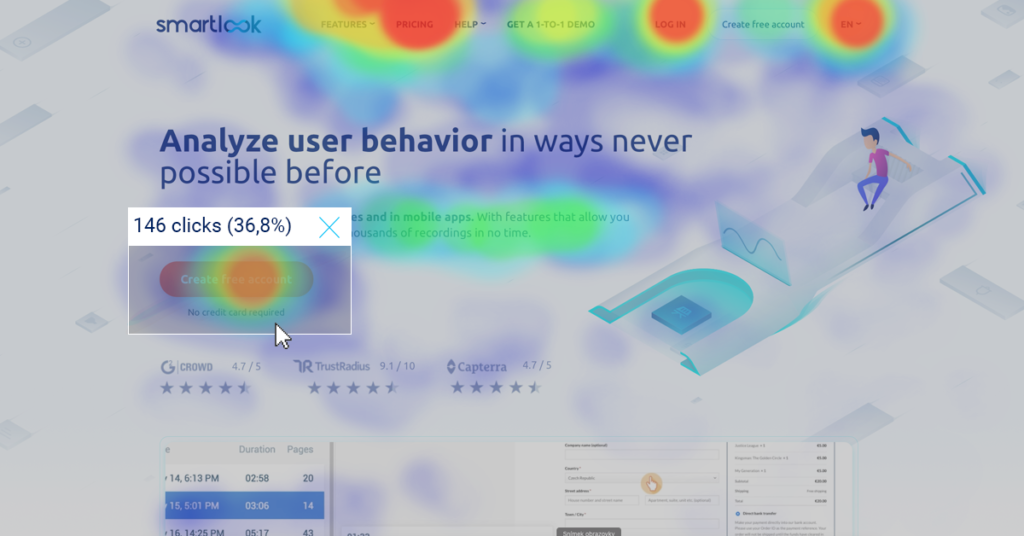This is why understanding buyer intent is more important than ever before.
Buyer intent data can help sales and marketing use resources more effectively, improve sales outreach, and lower cost per leads.
But, there’s a challenge.
Buyer intent data is hard to come by — and accurate buyer intent data is even more difficult to find.
What are the different types of buyer intent data? (and why you should care)
What is buyer intent data? Buyer intent data is the holy grail of customer data — but not all that data is equal.
Before diving into how we can use data to improve our understanding of prospects, I want to talk about the three different types of buyer data and why you should care about which one you use.
- First-party buyer intent data is insights you capture based on actions on your site — think clicks, time on page, etc. This data usually comes from Google Analytics or a website tracking tool.
- Second-party buyer intent data is collected by other websites (like Amazon or Tech Target) that then gets sold to other companies — like yours.
- Third-party buyer intent data is based on actions people take outside of your website that are then collected and sold.
The difference between first-, second-, and third-party buyer intent data is where the data comes from. Which is a big deal because where data comes from can, of course, impact the accuracy.
For example, seeing that a user downloaded a lead magnet and then looked at your pricing page for two minutes is far more valuable than finding out that they (well, maybe them) looked at five different service providers.
First-party buyer intent data (that is, data gathered from actions users took on your website) is more accurate and, therefore, more valuable.
But, how do you get access to that lovely data? Let’s cover a few ways.
How to get access to website behavior
So, how do you get access to this valuable first-party user data? The most obvious source is analytic platforms like Google Analytics. That will give you a solid understanding of where your site visitors linger, what they click, and where they go.
But, Google Analytics has its limits. Which is why finding other sources is crucial to understanding buyer behavior.
Heat maps
Heat map tools, like Smartlook, provide a visual representation of the most popular areas of your website. While other metrics, like clicks or page views, offer valuable insights, heatmaps can draw attention to the most popular — and least popular — parts of your website.

For example, you can visually see which areas of the site people spend the most time looking at and where they click. This data can be used in conjunction with other data to provide a clearer understanding of your site’s strengths and weaknesses.
Onsite surveys
Onsite survey tools like Crowdsignal provide direct feedback about onsite features, content, and user experience. Asking users directly about which features or content they find most useful allows brands to develop a user-friendly site based on data rather than gut instinct.
Website visitor tracking tools
Website visitor tracking tools like Leadfeeder gather data about actions users take on your website and match that data with actual users in your CRM or companies based on IP addresses.

Live or AI-powered chat
Chat tools like Chatbot allow sites to provide better customer service by answering questions and connecting site visitors with resources in seconds. That data can also be used to qualify leads, route users to the right customer service agent, or streamline the purchase process.
3 ways to turn website behavior into buyer intent data
Using one of the tools above will give you access to a wide range of data about what users want, what they read, and how they navigate your website.
Now what? Here’s how to turn behavior, like clicks and page views, into actionable buyer intent data.
Filter out unqualified leads
Sales teams are only as good as the leads they receive. Rather than having your sales team sift through mounds of leads, use website behavior to determine which leads are more likely to convert.
For example, use a website visitor tracking tool to automatically send leads that view your services page and read two blogs to your sales team. Or, use an AI-powered chatbot to ask questions about prospects’ location, company size, and industry to determine if the user is in your target audience.
Consider automating interactions with prospects higher in the funnel so sales can spend more time on leads that are ready to buy.
Find out where buyers are in the buying cycle
The buying journey is more complex than ever. Rather than the standard awareness > interest > decision > action, prospects often move back and forth between multiple steps in the process.
According to Gartner, B2B customers are far more likely to engage in “looping” behavior, sometimes revisiting each buying stage several times.

This means understanding where buyers are in the process is more important than ever before. Using chatbots or heat map data allows brands to better understand where buyers are — and what they might need before they are ready to convert.
For example, understanding someone is still exploring their options might mean your sales or marketing team targets those users with blogs comparing your solution to your competitors. Or, if you know they are ready to select a supplier, you can send a LinkedIn message to schedule a consultation.
Personalize sales outreach
According to Salesforce, just 6% of B2B opportunities result in a deal. That means sales people spend a ton of time nurturing leads that are going nowhere. Website behavior provides critical insights that can improve the outreach process and increase close rates.
For example, onsite survey data can help sales understand the challenges prospects face — and work to overcome those objections. Website visitor tools also provide individual data about company behavior, for example, sales could see five people at the same company viewed a blog post about integrations, which might indicate the company is looking for a specific integration.
That data can be leveraged by the sales team (without being creepy.) Your salesperson might say “I know a lot of companies in your industry are looking for integrations — what CRM do you use?” and then explain how their integrations work and the ones your company offers.
Conclusion
Buyer intent data is a powerful tool for improving sales outcomes. But you might not realize that the most accurate buyer intent data is hiding in plain sight — right on your website. Using tools like heat maps, onsite surveys, website visitor tracking tools, and chatbots provides access to data about your specific audience rather than vague ‘insights’ about the industry as a whole.
Data like clicks, views, and time on page can then be converted into actionable data to improve sales, marketing, and even site design.











